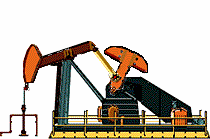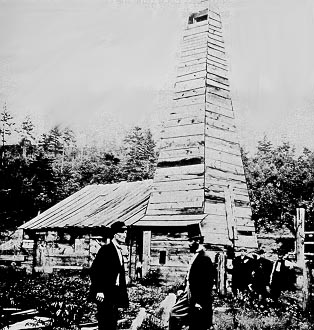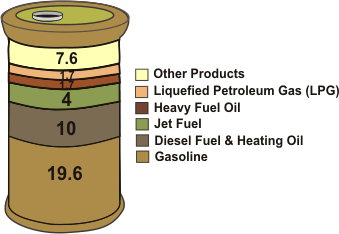
|
||||||||||||
|
|
|
Oil
Oil comes from crude oil, which is a mix of hydrocarbons with some oxygen, nitrogen, and sulfur impurities. One barrel of oil (42 U.S. gallons) can provide about 6 million Btu. Crude oil reserves are found all over the world, but the Middle East alone has about 63 percent of the known reserves. Of the oil consumed in the United States, most is used in transportation, and much of the rest goes to industrial, commercial, and residential uses. Crude oil is used to produce not only a range of fuels, but also petrochemical ingredients for plastics, inks, tires, pharmaceuticals, and a host of other products.
High-tech oil exploration technology and practices have led to the discovery of as many new reserves as have already been used. To make the most of this valuable resource, energy producers are developing more efficient refining methods, product makers are finding more efficient ways to use petrochemicals, and manufacturers are developing more efficient cars. New techniques of locating and extracting oil from the earth are also making it possible to recover oil that was once too expensive to produce. Oil is usually recovered by drilling wells through the non-porous rock barrier that traps the oil. In general, about 30 percent of the oil trapped can be economically recovered by pumping. "Secondary" recovery can remove another 10 percent, by flooding the well with high-pressure water or gas. Another 10 percent can sometimes be recovered with "tertiary" methods that heat the oil to scrub it out. About half of the oil is left trapped in the rock. Oil producers are continually seeking economical ways to recover more of this oil. The oil refining process separates crude oil into different hydrocarbons and removes impurities such as sulfur, nitrogen, and heavy metals. The first step is fractional distillation, a process that takes advantage of the fact that different hydrocarbons boil at different temperatures. In a tall tower called a fractionating column, crude oil is heated until it boils. Horizontal trays divide the column at intervals. As the oil boils, it vaporizes. Each hydrocarbon rises to a tray at a temperature just below its own boiling point. There, it cools and turns back into a liquid. The lightest fractions are liquefied petroleum gases (propane and butane) and the petrochemicals used to make plastics, fabrics, and a wide array of consumer products. Next come gasoline, kerosene, and diesel fuel. Heavier fractions make home heating oil and fuel for ships and factories. Still heavier fractions are made into lubricants and waxes. The remains include asphalt. The refining process then continues, with heavy fractions converted into lighter fractions. In most cases, "cracking" processes are used to transform large (heavy) hydrocarbon molecules and make the smaller, lighter molecules such as gasoline and jet fuel. Better refining technologies have made it possible to produce over 21 gallons of gasoline from a 42-gallon barrel of crude oil—a remarkable advance over the industry’s early days, when a barrel of oil yielded just 11 gallons of gasoline. Oil shale was never buried deeply enough or heated enough to form crude oil. Its hydrogen content is between that of coal and crude oil. Concentrations of oil are low, so that, at most, one barrel of oil can be recovered from 2.4 tons of sand or 1.5 tons of rock. Huge amounts of oil shale are found all over the world. In fact, the total global resource is 1,000 times greater than crude oil reserves. But extracting the energy value of oil shale is not practical today. Scientists and engineers continue working on ways to recover oil shale for a reasonable cost.
Crude oil is a naturally-occurring substance found trapped in certain rocks below the earth's crust. It is a dark, sticky liquid which, scientifically speaking, is classed as a hydrocarbon. This means, it is a compound containing only hydrogen and carbon.
Oil well DOE Graphic
It was also formed more than 300 million years ago. Some scientists say that tiny diatoms is the source of oil. Diatoms are sea creatures the size of a pin head. They do one thing just like plants; they can convert sunlight directly into stored energy. Crude oil is highly flammable and can be burned to create energy. Crude oil is measured in barrels. When crude oil first came into large-scale commercial use in the United States in the 19th century, it was stored in wooden barrels. One barrel equals 42 US gallons, or 159 litres.
The U.S.'s first commercial oil well was drilled in 1859
near Titusville, Pennsylvania, by Edwin Drake
Today's oil industry began almost 150 years ago -- in 1859. In those days, an oily fuel for lamps and lubricants was made by melting the fact of whales. But whale oil had become expensive. A company called the Pennsylvania Rock Oil Company became interested in digging for natural oil. Oily rocks had been encountered in Pennsylvania by people drilling for salt. At first, this "rock oil" had been used as a medicine, but if enough of it could be found, perhaps it might be a cheaper substitute for whale oil. The Pennsylvania Rock Oil Company came up with the idea of drilling for oil. Not everyone was convinced, however. One banker who was asked to lend some of the money for the venture remarked, "Oil coming out of the ground, pumping oil out of the earth as you pump water? Nonsense!" But the Pennsylvania Rock Oil Company was convinced that drilling for oil -- rather than digging for it -- was the way to go. They hired a part-time railroad conductor named Edwin L. Drake to go to Titusville, Pennsylvania and see if he couldn't drill for oil. After a year of planning and drilling Drake struck oil. A new industry was born.
Modern-day oil prospecters use sound waves to locate oil. In one technique, (1) a signal is sent into the rock by a vibrator turck, (2) the reflected waves are received by geophones, and (3) the data is transmitted to a laboratory truck.
After crude oil is refined into gasoline and other petroleum products, the products must be distributed to consumers. The majority of gasoline is shipped first by pipeline to storage terminals near consuming areas and then loaded into trucks for delivery to individual gas stations. Gasoline and other products are sent through shared pipelines in “batches.” Since these batches are not physically separated in the pipeline, some mixing or “commingling” of products occurs. This is why the quality of the gasoline and other products must be tested as they enter and leave the pipeline to make sure they meet appropriate specifications. Whenever the product fails to meet local, State, or Federal product specifications, it must be removed and trucked back to a refinery for further processing.
Products Made from a Barrel of Crude Oil (Gallons)
One barrel of crude oil, when refined, produces about 20 gallons of finished motor gasoline, and 7 gallons of diesel, as well as other petroleum products. Most of the petroleum products are used to produce energy. For instance, many people across the United States use propane to heat their homes and fuel their cars. Other products made from petroleum include: ink, crayons, bubble gum, dishwashing liquids, deodorant, eyeglasses, records, tires, ammonia, and heart valves.
Oil History
Credit: The U.S. Department of the Interior, Bureau of Land Management Argonne National Laboratory The Oil Shale and Tar Sands Programmatic Environmental Impact Statement, Government Of Alberta Canada,Energy Information Administration, U.S. Department of Energy, OPEC, Shell Oil company, The CIA |






